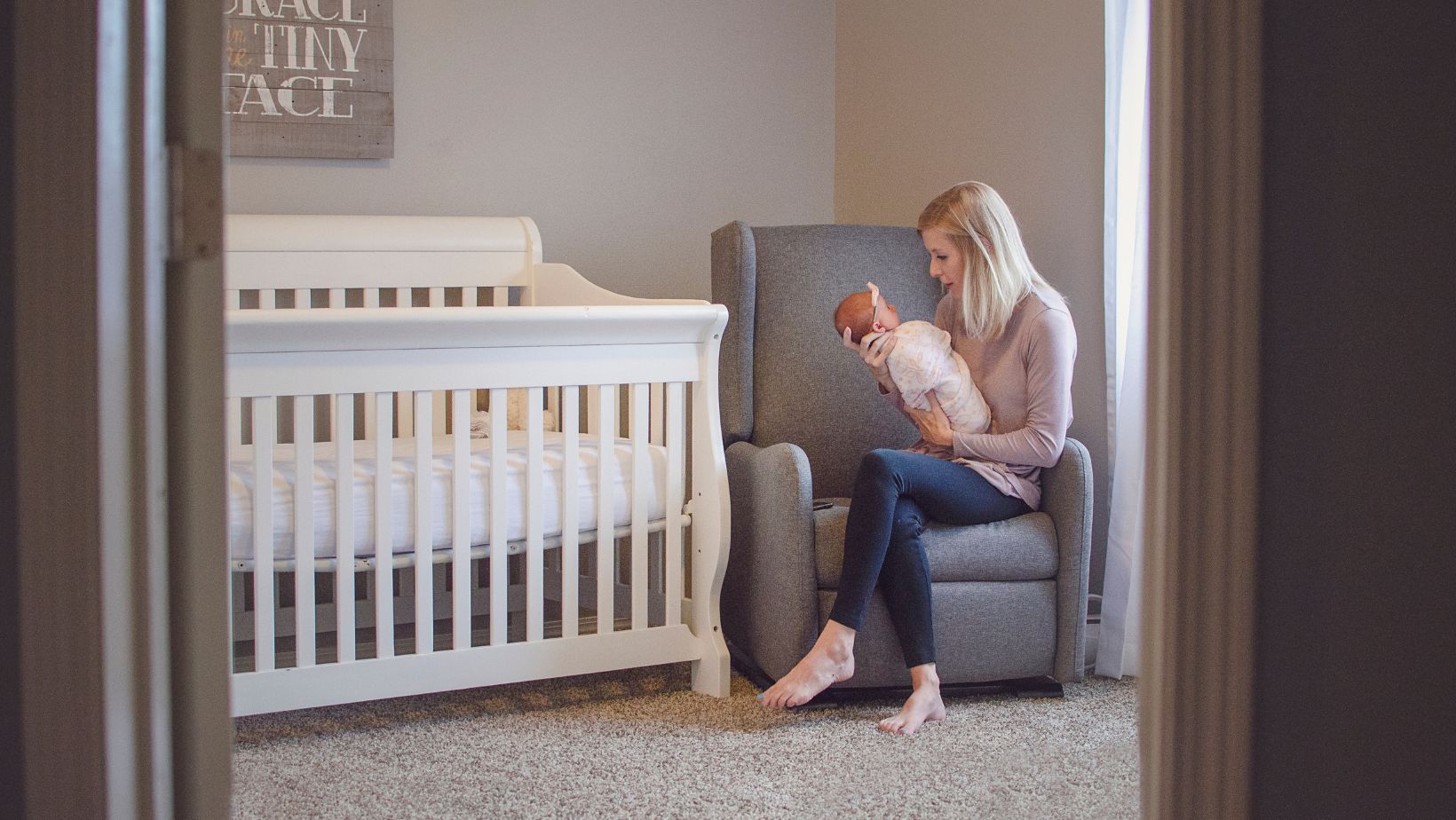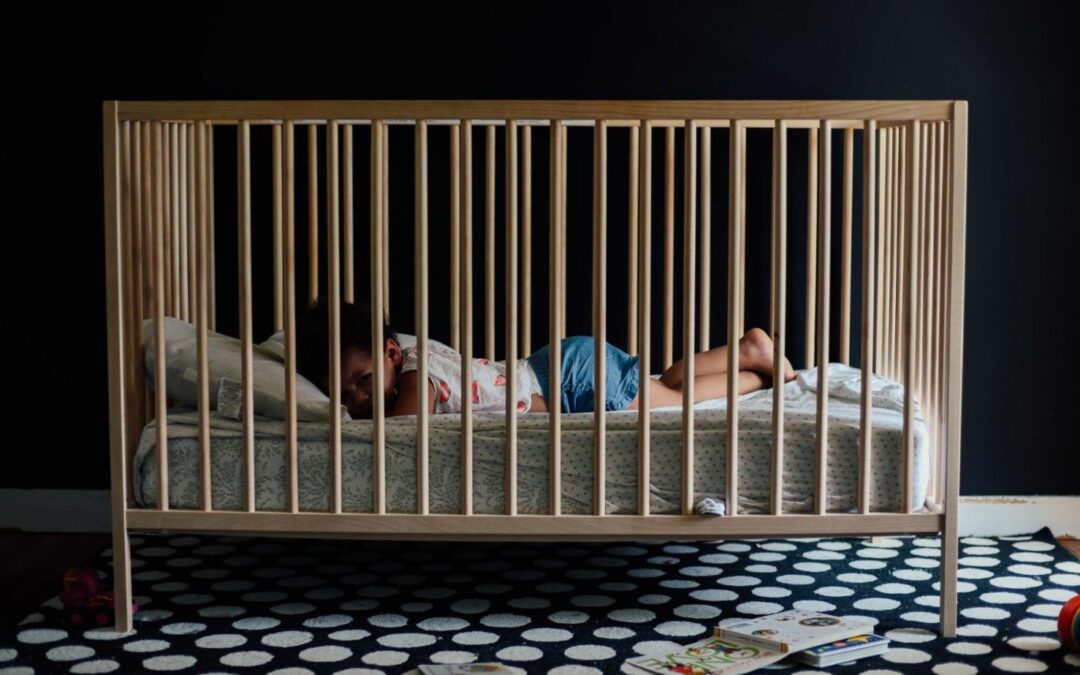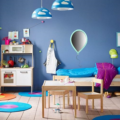Welcoming a new member into your family is an exhilarating and joyous experience. As parents, your utmost concern is ensuring the safety and well-being of your precious bundle of joy. One of the most crucial aspects of infant care is creating a secure sleeping environment for your baby. It is essential when transitioning your baby into their room. In this comprehensive guide, we will explore the necessary steps and precautions you can take to provide a safe and comfortable sleeping environment for your baby, regardless of your background or experience as a parent.
Chapter 1: Understanding the Importance of a Safe Sleeping Environment
1.1 Sudden Infant Death Syndrome (SIDS)
Sudden Infant Death Syndrome, or SIDS, is a heartbreaking phenomenon where seemingly healthy babies die during sleep, often without apparent reason. While the exact cause of SIDS remains a mystery, creating a safe sleeping environment is one of the most effective ways to reduce the risk.
1.2 The Transition to Their Room
Transitioning your baby to their room is a significant milestone but comes with added responsibility. Babies are more vulnerable during sleep, and their environment is crucial to their safety and overall development.
Chapter 2: Preparing the Baby’s Room
2.1 Room Selection
Choosing the fitting room for your baby is the first step. Consider factors like proximity to your bedroom, temperature control, and ease of monitoring. Ensure the room is well-ventilated and has a reliable source of natural light.
2.2 Baby-Proofing
Baby-proofing is not limited to the living room or kitchen. Ensure the baby’s room is free from hazards such as cords, small objects, and sharp edges. Cover electrical outlets and secure heavy furniture that might topple.
Chapter 3: The Baby’s Sleep Surface
3.1 Crib Safety
Investing in a safe and sturdy crib is paramount. Ensure the crib adheres to current safety standards. Look for features like fixed sides, slats no more than 2⅜ inches apart, and no decorative cutouts or finials that could pose a choking hazard.
3.2 Mattress Selection
A firm and well-fitting mattress is essential for a baby’s safety. The mattress should fit snugly within the crib without gaps. Avoid using secondhand or soft beds, as they increase the risk of suffocation. When choosing a bassinet mattress, prioritize quality and conformity to safety standards to ensure your baby’s comfort and safety during sleep.
3.3 Bedding Choices
Opt for minimal bedding. Use a fitted crib sheet, and avoid pillows, bumper pads, stuffed animals, and heavy quilts. These items can pose suffocation risks for your baby.
Chapter 4: Positioning Your Baby
4.1 Back to Sleep
Health authorities’ “Back to Sleep” campaign recommends placing your baby on their back to sleep. This position reduces the risk of SIDS. Babies put to sleep on their stomachs or sides have a higher risk of suffocation. For more in-depth information on safe sleep practices, consider enrolling in a comprehensive baby sleep course.
4.2 Tummy Time
Encourage tummy time during play while your baby is awake and supervised to help develop neck and upper body strength. However, always place your baby on their back for sleep.
Chapter 5: Creating a Comfortable Sleep Environment
5.1 Room Temperature
Maintaining an appropriate room temperature is crucial. Aim for a comfortable range between 68°F and 72°F (20°C to 22°C). Use a room thermometer to monitor the temperature.

5.2 Ventilation
Good airflow is essential for your baby’s well-being. Ensure the room is well-ventilated, but avoid drafts. Use a fan if necessary, but make sure it doesn’t blow directly on the baby.
5.3 White Noise Machines
Some parents find white noise machines helpful in creating a soothing sleep environment. However, keep the volume at a low, consistent level, and place the device away from the crib to prevent hearing damage.
Chapter 6: Nighttime Lighting
6.1 Low-Intensity Lighting
During nighttime feedings or check-ins, it’s essential to have low-intensity lighting. Use a soft night light with a warm glow to avoid startling your baby.
6.2 Blackout Curtains
Investing in blackout curtains can help create a dark environment, promoting better sleep for your baby. Be cautious not to block natural light entirely during the day to maintain a healthy circadian rhythm.
Chapter 7: Monitoring Your Baby
7.1 Baby Monitors
Baby monitors have come a long way and offer various features. Choose a monitor that suits your needs, whether audio-only, video or a combination. Ensure the monitor is positioned correctly to have a clear view of the crib.
7.2 Safe Sleep Practices
Frequent check-ins on your baby are essential, but avoid excessive interventions. Ensure your baby is comfortable, not too hot or too cold, and in the correct sleeping position. Use your monitor to observe their breathing and movements.
Chapter 8: Dressing Your Baby for Sleep
8.1 Appropriate Clothing
Dress your baby in appropriate sleepwear based on the room temperature. Avoid overdressing or using heavy blankets. A one-piece sleeper or sleep sack is a safe and comfortable option.
8.2 Swaddling
Swaddling can help soothe some babies, but it should be done correctly. Ensure your baby’s hips can move freely and the swaddle is not too tight. Discontinue swaddling once your baby starts to roll over.
Chapter 9: Safe Sleep Practices for Naptime
9.1 Consistency
Consistency is vital when it comes to safe sleep practices. Apply the same principles during naptime at night, including placing your baby on their back to sleep.
9.2 Portable Sleep Environments
When your baby naps outside their crib, use a portable crib or bassinet for safe sleep. Avoid using swings, car seats, or other devices for extended sleep periods.
Chapter 10: Sibling and Pet Safety
10.1 Sibling Education
If your baby’s room is shared with a sibling, ensure the older child understands the importance of a safe sleep environment. Teach them not to place toys or objects in the crib.

10.2 Pet Considerations
Pets are part of the family, but their presence in the baby’s room should be carefully monitored. Ensure pets are well-behaved, and never leave them unattended with the baby.
Chapter 11: Breastfeeding and Safe Sleep
11.1 Benefits of Breastfeeding
Breastfeeding has numerous benefits for both you and your baby. It is associated with a reduced risk of SIDS. Try to breastfeed your baby or provide expressed breast milk for nighttime feedings.
11.2 Safe Bedsharing
If you choose to bedshare, it’s essential to do so safely. Ensure your bed is firm and there are no gaps or crevices where your baby could become trapped. Keep pillows and heavy blankets away from the baby, and avoid smoking or alcohol consumption if you plan to bedshare.
Chapter 12: Recognizing Signs of Illness
12.1 Vigilance
Parents should be vigilant about their baby’s health. Watch for signs of illness, including fever, coughing, or difficulty breathing, and seek medical attention promptly if you suspect something is wrong.
12.2 Sickness and Safe Sleep
Babies who are sick or have medical conditions may require extra attention during sleep. Consult your pediatrician to determine the best sleep practices for your child’s needs.
Conclusion
Creating a secure sleeping environment for your baby in their room is a fundamental responsibility of parenthood. Regardless of your background or experience, following these guidelines can help ensure your baby sleeps safely and soundly. Understanding the risks, preparing the baby’s room, and adhering to safe sleep practices can significantly reduce the risk of Sudden Infant Death Syndrome (SIDS) and provide your baby with the best possible start in life. Remember, a well-rested baby is happy and healthy, and your dedication to their safety will bring peace of mind and joy to your parenting journey.
Jessica has a flair for writing engaging blogs and articles. She enjoys reading and learning new things which enables her to write different topics and fields with ease. She also strives to break down complex concepts and make them easy for anybody to comprehend.





